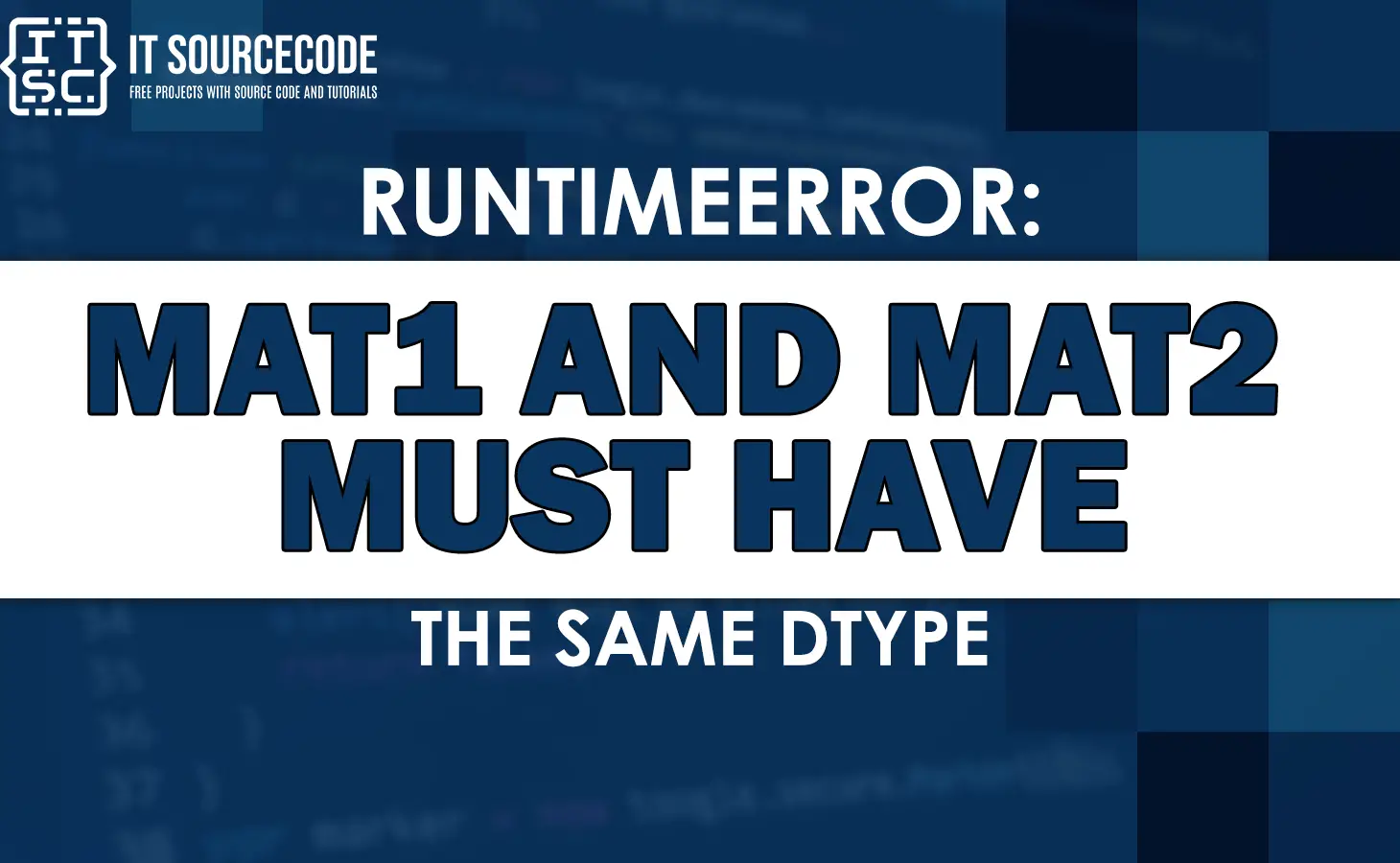Are you experiencing the runtimeerror: mat1 and mat2 must have the same dtype error while working with matrices in Python?
This error occurs when you are attempting to perform an operation between two matrices with different data types.
In this article, we will discuss what this error means, its possible causes, and ways to fix it.
Common Causes of the Error
Here are the common causes of the Runtimeerror mat1 and mat2 must have the same dtype error.
- Matrix data type mismatch
- Matrix shape mismatch
- Incorrect use of libraries
Why this error occur?
This error message usually occurs because we are trying to perform a matrix operation, such as multiplication or addition, on two matrices that have different data types.
How to Fix the runtimeerror mat1 and mat2 must have the same dtype Error?
There are multiple solutions to fix the mat1 and mat2 must have the same dtype error. Some of these include:
Solutions 1: Convert one matrix to the data type of the other matrix
One of the solutions to fix the error is to convert one matrix to the data type of the other matrix.
For example, if you have a matrix of int data type and a matrix of float data type, you can convert the int matrix to float data type using the .astype() method in NumPy.
import numpy as np
mat1 = np.array([[1, 2], [3, 4]])
mat2 = np.array([[1.0, 2.0], [3.0, 4.0]])
# Convert mat1 to float data type
mat1 = mat1.astype('float')
# Add mat1 and mat2
result = mat1 + mat2
print(result)
Output:
[[2. 4.]
[6. 8.]]
This is the example to convert one matrix to the data type of the other matrix.
Solution 2: Use the same data type for both matrices
Another solution to fix the error is to use the same data type for both matrices.
For example, if you want to add two matrices, make sure that both matrices have the same data type before performing the operation.
import numpy as np
mat1 = np.array([[1, 2], [3, 4]])
mat2 = np.array([[5, 6], [7, 8]])
# Convert mat2 to int data type
mat2 = mat2.astype('int')
# Add mat1 and mat2
result = mat1 + mat2
print(result)
Output:
[[ 6 8]
[10 12]]
This is the example to use the same data type for both matrices.
Solution 3: Check the shape of the matrices
You can also fix the error by ensuring the both matrices have the same shape. If the matrices have different shapes, you can reshape them to have the same shape before performing the matrix operation.
import numpy as np
mat1 = np.array([[1, 2], [3, 4]])
mat2 = np.array([5, 6])
# Reshape mat2 to have the same shape as mat1
mat2 = np.reshape(mat2, (2, 1))
# Add mat1 and mat2
result = mat1 + mat2
print(result)
Output:
[[ 6 7]
[ 9 10]]
Solution 4: Using Type Casting
Type casting is another solution to fix the error message. You can use the dtype parameter when creating the matrices to ensure that they have the same data type:
import numpy as np
matrix1 = np.array([[1, 2], [3, 4]], dtype=float)
matrix2 = np.array([[1.5, 2.5], [3.5, 4.5]], dtype=float)
result = matrix1 + matrix2
print(result)This is the example code on using type casting.
Output:
[[2.5 4.5]
[6.5 8.5]]
Additional Resources
- Runtimeerror: cuda out of memory.
- Runtimeerror: no cuda gpus are available
- Runtimeerror: grad can be implicitly created only for scalar outputs
- Runtimeerror: trying to resize storage that is not resizable
- Runtimeerror working outside of request context
Conclusion
The “runtimeerror: mat1 and mat2 must have the same dtype” error is a common error that occurs when you attempt to perform matrix operations on matrices with different data types.
This error can be fixed by converting one matrix to the data type of the other matrix, using the same data type for both matrices, checking the shape of the matrices, and Using Type Casting.

